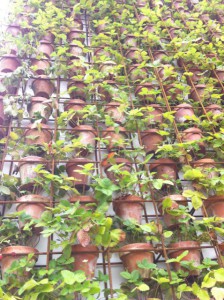![]()
The Art of Tasting Wine with James Flewellen: Spotlight on Chardonnay Grapes
Just as Pinot Noir is Burgundy’s queen of red grapes, so Chardonnay is Burgundy’s king of whites. Although originating from Burgundy, Chardonnay is so widely grown around the world it is now considered to be an ‘international variety’.
Chardonnay is often described as a ‘winemaker’s grape’ in that the primary qualities of the grape are overwhelmed by the winemaking procedure, meaning the winemaker has an essentially blank canvas upon which to work. I take exception to this somewhat in that there is certainly something about Chardonnay that makes it ‘Chardonnay’, it’s just that this quality may vary depending on location and climate.
The typical flavour profile of the grape is green apple and lemon if grown in cool places like Chablis in France, moving through to ripe red apple, peach and melon in warmer climes and eventually to tropical pineapple, mango and even banana notes in hot climates such as California and parts of Australia. Wines from hotter places tend to have a fatter, heavier texture, lower acidity and higher alcohol, whereas those from cold climates can be lean, austere and steely.
Chardonnay and oak go together like a hand in glove. Although there are many ways of integrating oak flavours with those of the grape, some winemakers in the past have chosen to overwhelm the natural expression of the grape with an unsubtle whack of oak. This has led to the association in many people’s minds that Chardonnay “tastes like wood.” Judicious use of new French oak adds butter, toast, nutty aromas and flavours to the wine, while new American oak brings a slightly ‘sweeter’ coconut or white chocolate profile. While some very fine wines can be profoundly ‘oaky’, to my mind this should always work with the available fruit flavours rather than overwhelm them. There is a recent movement in new world countries such as Australia and New Zealand to produce leaner, more mineral Chardonnays with very little new oak influence, while this has been practised as the norm in Chablis, in particular, for decades.
|
|










 The wheat for pizzas is ground on site; the Perth restaurant currently grinds nearly a tonne of local wheat each week. Butter and yoghurt are made here, as is tonic water, the pasta, bread and pastries. Fresh juices are hand-squeezed to order and natural wines are poured straight from the barrel, both are served in jam jars.
The wheat for pizzas is ground on site; the Perth restaurant currently grinds nearly a tonne of local wheat each week. Butter and yoghurt are made here, as is tonic water, the pasta, bread and pastries. Fresh juices are hand-squeezed to order and natural wines are poured straight from the barrel, both are served in jam jars.


















